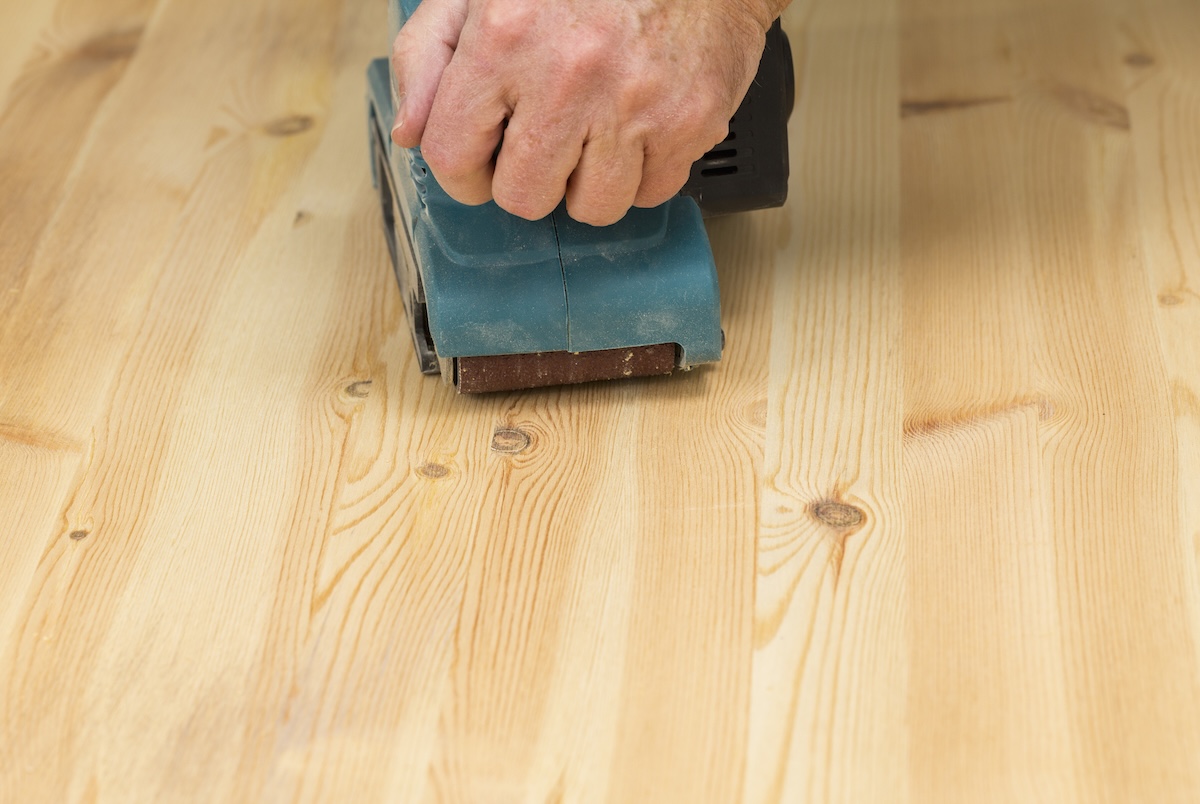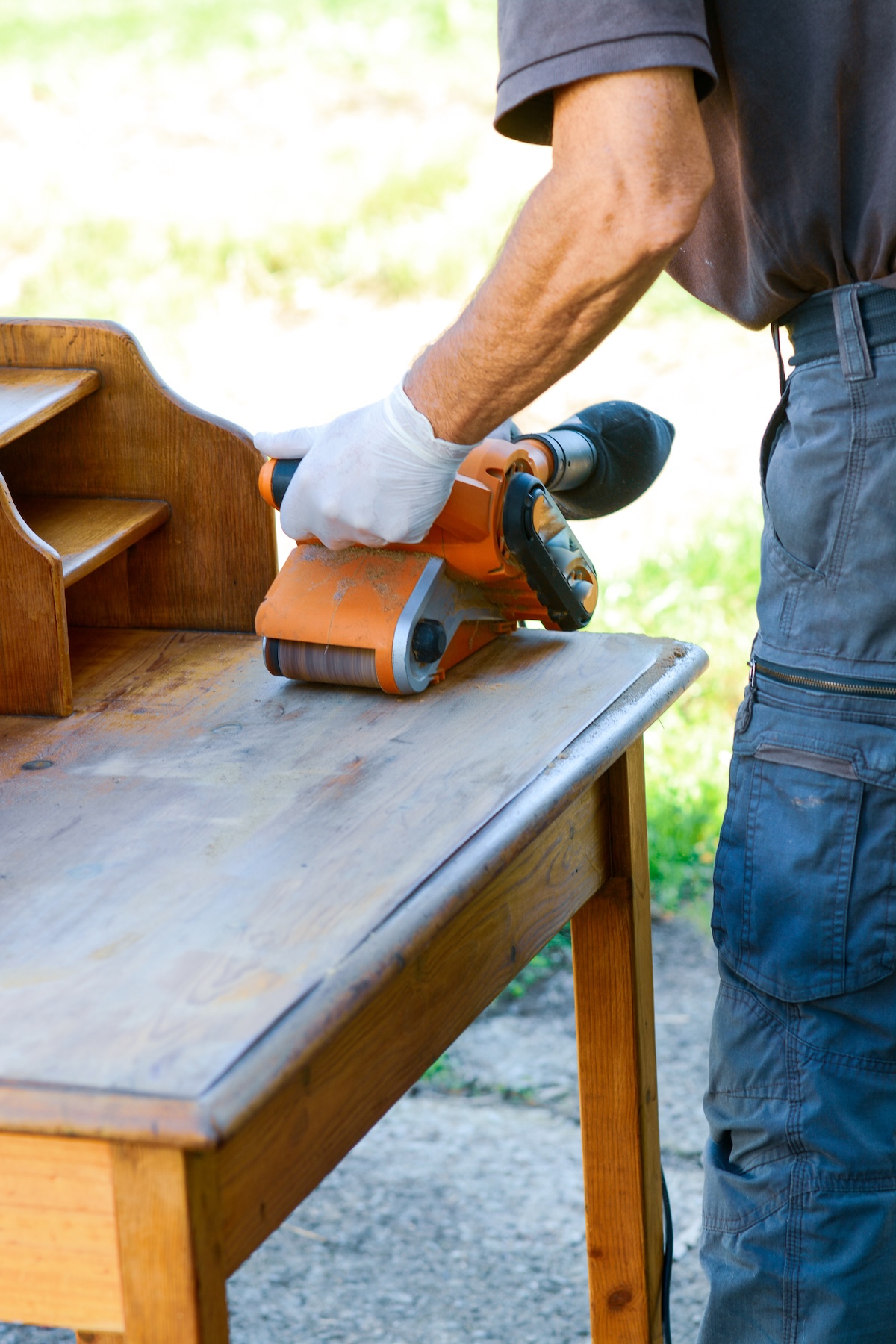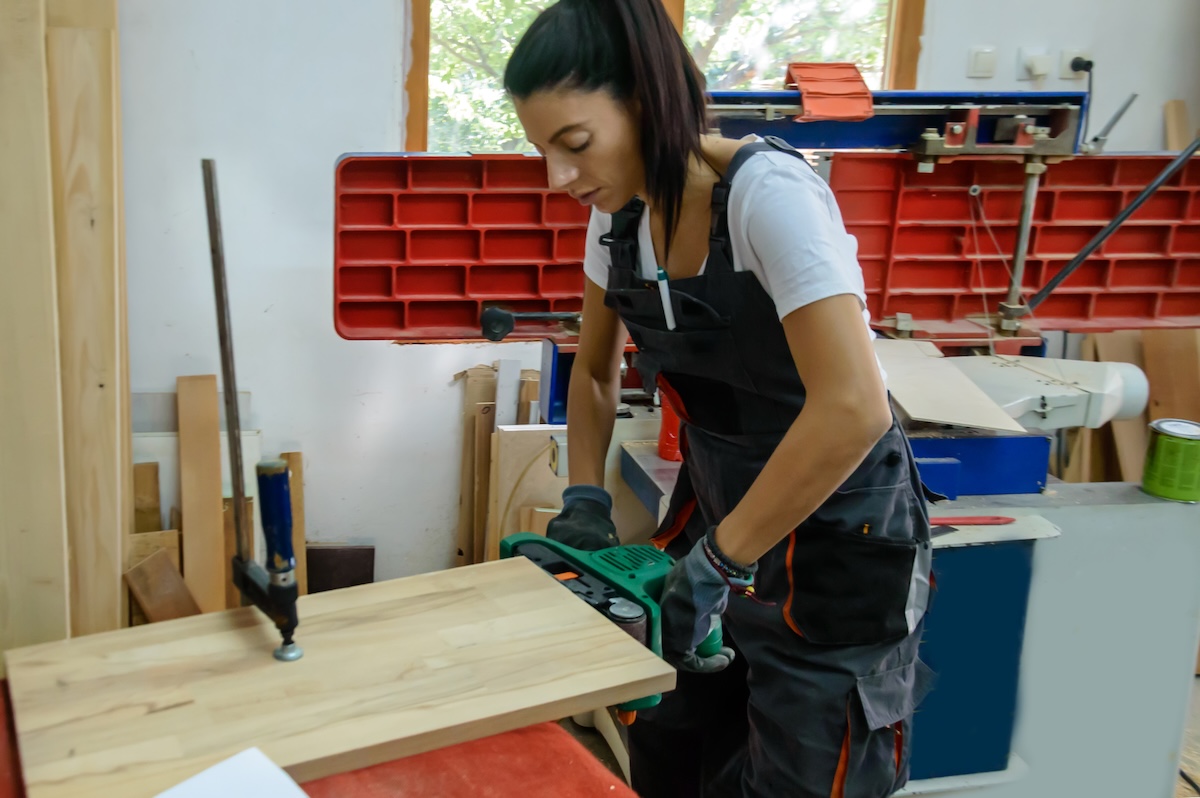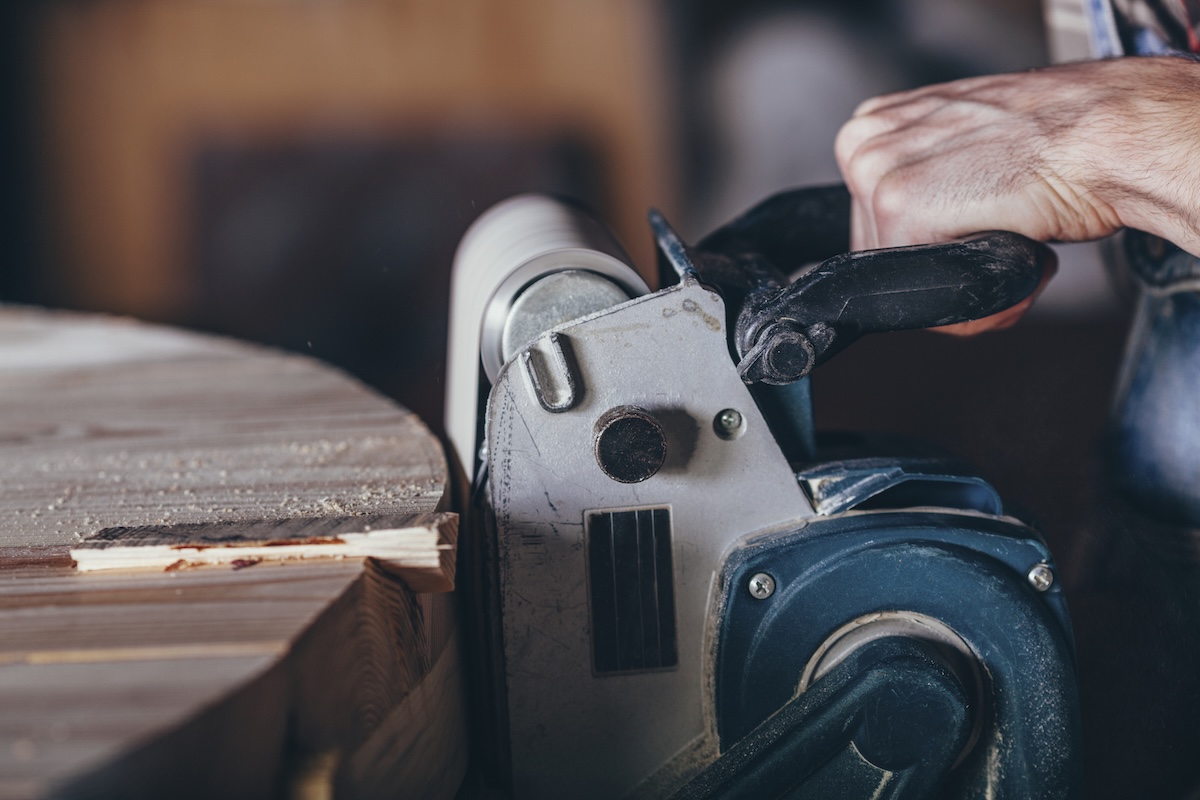We may earn revenue from the products available on this page and participate in affiliate programs. Learn More ›
There are a wide range of sanders and each is designed for specific uses, such as a detail sander for fine furniture or a benchtop drum sander for sanding large pieces of wood or metal. Belt sanders are another great addition to a lineup of sanding tools, as they offer a variety of uses that make them essential for a woodworker’s or metalworker’s tool kit.
Belt sanders are typically handheld power tools that can be either corded or battery-powered. These sanders are highly versatile, though they are commonly equipped with coarse-grit sanding belts that can remove substantial amounts of material in a hurry. Use this guide to learn about a range of belt sander uses and projects these tools can handle around the home.
Our Recommendation: Makita 9903 3″ x 21″ Belt Sander at The Home Depot for $339
This Makita belt sander features auto-tracking belt alignment to help keep the abrasive belt centered on the track even after several sanding passes, and a built-in dust collection bag that reduces the amount of airborne dust by about 65 percent.
Smooth wooden playground equipment.
Wooden swings, sandboxes, and see-saws can develop rough surfaces that make the playground equipment hazardous for your kids. Without proper maintenance, one wrong move could result in cuts, scrapes, or splinters, which is why it’s a good idea to use a belt sander for smoothing and sanding wood surfaces in order to improve the look and safety of the equipment.
While you are working, if there are any uneven areas on the wooden playground equipment, you can take the opportunity to use the belt sander for leveling out these spots to reduce the areas where water may otherwise pool. After sanding smooth, seal the wood to prevent weathering.

Prepare a hardwood floor for refinishing.
Refinishing a hardwood floor can reinvigorate the appearance and texture of the floor, giving the room an aesthetic upgrade without the expense of new flooring. Belt sanders are one of the best sanders for hardwood floors because they can be used to quickly and efficiently remove old floor finishes.
After removing the old finish on the hardwood floor, you can also use a belt sander to prepare the exposed wood for a new finish. Just make sure to work slowly and carefully to avoid removing too much material from the existing hardwood.
Restore a wood gate, fence, or deck.
When you are still learning how to use a belt sander, it’s a good idea to take on a project where there is room for mistakes, like restoring an old deck. Since decking tends to be made of thick pieces of wood, there’s wiggle room if you oversand a bit. You can usually go back and even out the surface with little issue.
Deck boards become rough and cracked over time due to exposure to rain, UV radiation, snow, and ice. By using a belt sander to remove old paint or stain, sand away the top layer of material, and level out any uneven spots, you can expose the smooth layers of the wood below. Similarly, a belt sander can be used for the same purpose on a wooden gate or fence boards. Just be sure to sink all of the fasteners below the wood decking before beginning.
Strip old paint, stain, or varnish.
Many types of sanders can be used to strip old paint, stain, or varnish from a wooden or metal surface, but belt sanders are a top choice due to their ability to quickly and efficiently remove thick layers of material with little effort. However, when you are using a belt sander to strip paint, stain, or varnish, you need to be careful to avoid removing too much material.
Additionally, if you apply too much pressure to the sander, there is a risk of damaging wood, metal, or even plastic materials, making the job significantly more difficult, so make sure to work slowly and diligently if you plan to tackle this type of project.
Pro tip: Always practice on a scrap surface in order to develop a level of comfort with a sander.

Sharpen knives and chisels.
A surprising use for belt sanders is sharpening knives, chisels, and other metal tools. However, it’s important to mention that this process takes some time and effort to learn properly, so you should practice with an old knife or chisel the first couple of times in case you make a mistake.
You can switch between different grit belts to grind, sharpen, hone, and polish the tools to get the ideal result. If you feel it’s too difficult to start with a belt sander, you can also tackle this project with a fixed-base bench sander, allowing you to focus on the tools as you work.
Shape metal contours.
Using a belt sander on metal may seem counterintuitive at first glance, but the power behind these essential tools allows metalworkers to smooth and shape complex contours into softer metals. You can get the desired shape for the metal by using the continuous movement of the sanding belt to follow the curve of the metal surfaces, while applying light pressure to shape the intended contours.
However, if you want to create tight curves or cylindrical shapes, you would be better off using a specialized tube belt sander, which is typically designed to wrap the sanding belt around the contours of the metal.

Level uneven wood, metal, or plastic.
One of the most well-known uses for a belt sander is to level an uneven surface. These tools can be used on wood, metal, or even plastic to quickly and efficiently grind away material, allowing you to smooth and level surfaces.
The best belt sanders can quickly switch out sanding belts so you can choose the correct grit depending on the amount of material that needs to be removed and the target material you are working with. Carefully move the belt sander across the material to gradually level uneven areas and achieve a flat, even plane.


